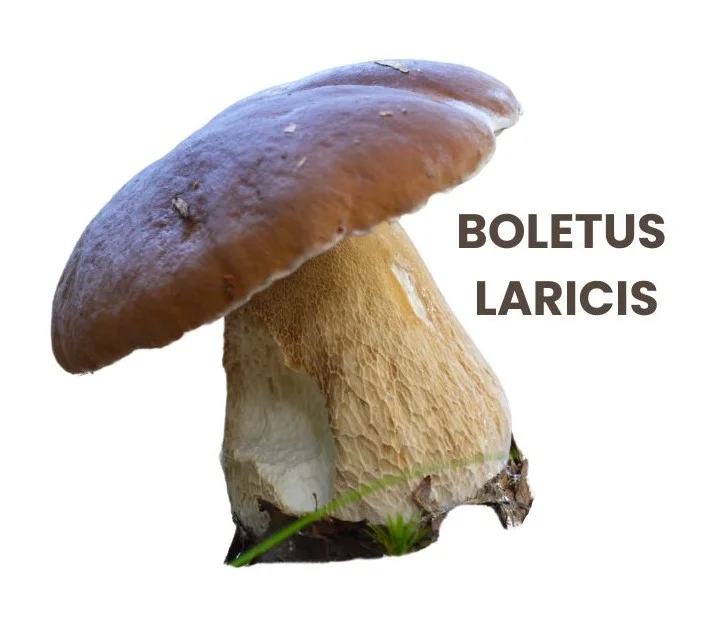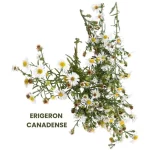Boletus laricis, or White Agaric, is a homeopathic remedy primarily indicated for quotidian intermittent fever, especially when accompanied by profuse perspiration at night.

SOURCE INFORMATION
Scientific Classification
- Kingdom: Fungi
- Phylum: Basidiomycota
- Class: Agaricomycetes
- Order: Boletales
- Family: Boletaceae
- Genus: Boletus
- Species: Boletus laricis
Origin
- Boletus laricis, commonly known as White Agaric, is a species of fungus belonging to the Boletaceae family.
- It is typically found growing on decaying wood, particularly in forests with larch trees (Larix spp.).
- Larch trees are commonly distributed across various regions of the Northern Hemisphere, including Europe, Asia, and North America.
- White Agaric is often observed in temperate and boreal forests where larch trees are prevalent.
Historical Facts
- In traditional European herbalism, White Agaric was valued for its therapeutic effects on fevers and perspiration-related conditions.
- Over the centuries, it has been employed by herbalists and healers as a remedy for feverish ailments and associated symptoms.
DRUG PATHOGENESIS
- White Agaric acts on the body’s fever response, particularly addressing conditions characterized by chilliness along the spine followed by hot flashes.
- It also influences the skin, causing hot and dry sensations, especially in the palms, and itching between the scapulae and on the forearms.
KEY CHARACTERISTICS
Fever Symptoms
- Quotidian intermittent fever: Fever occurring daily with intervals of normal temperature in between.
- Light sweat without relief: The sweat is not sufficiently alleviating the feverish symptoms.
- Night-sweat in phthisis: Profuse perspiration at night, especially in cases of tuberculosis (phthisis).
Head Symptoms
- Sensation of lightness and hollowness in the head.
- Deep frontal headache: Pain in the front of the head.
- Thick, yellow coating of the tongue: Indication of inflammation or infection.
- Teeth indented: Possible indication of pressure or discomfort in the mouth.
Gastrointestinal Symptoms
- Constant nausea: Persistent feeling of queasiness.
Fever Characteristic
- Chilliness along the spine, alternating with hot flashes.
- Yawning and stretching when chilly: Reflex actions to combat coldness.
- Severe aching in shoulders, joints, and small of the back.
- Profuse perspiration at night, accompanied by hectic chills and fever.
Skin Symptoms
- Hot and dry skin, particularly in the palms.
- Itching between the shoulder blades and on the forearms.
MODALITIES
- Chilliness along the spine, hot flashes, and profuse perspiration are aggravated by dampness and cold weather
- Warmth and dry conditions provide some relief.
WHAT ARE MODALITIES IN HOMOEOPATHY?
RELATIONSHIP WITH OTHER DRUGS
Agaricin (Active constituent of Polyporus officinale)
- Similarities: Both Agaricin and Boletus laricis are indicated for profuse perspiration, especially at night, although Agaricin is specifically known for its effects on enervating night sweats associated with tuberculosis (phthisical nightsweats).
- Both remedies can also be used in cases of chorea (involuntary movements), dilatation of the heart with pulmonary emphysema, and fatty degeneration.
- Dosage: Agaricin is typically administered in doses ranging from 1-4 to 1-2 grains.
Boletus luridus
- Similarities: Boletus luridus shares similarities with Boletus laricis in terms of its indications for specific symptoms.
- Both remedies are used for certain types of pain, with Boletus luridus indicated for violent pain in the epigastrium (upper abdomen) and Boletus laricis for headaches.
- Additionally, both remedies may be indicated for skin conditions, with Boletus luridus used for urticaria tuberosa (hives with raised patches).
- Differences: Boletus luridus is specifically known for its effects on the gastrointestinal system, while Boletus laricis primarily focuses on fever, headache, and sweating symptoms.
Boletus satanus
- Similarities: Boletus satanus and Boletus laricis both share indications for symptoms related to weakness and debility.
- Both remedies may be indicated for conditions involving cold extremities, vomiting, and spasms of the extremities and face.
- Differences: Boletus satanus is particularly known for its effects on dysentery (inflammatory bowel disease), which is not a prominent indication for Boletus laricis.
These comparisons help homeopaths differentiate between remedies and select the most appropriate one based on the individualized symptoms and characteristics of the patient.
DOSE
The recommended dose of Boletus laricis is the first attenuation.
Frequently Asked Questions
What is Boletus laricis used for?
- Boletus laricis is primarily used for treating quotidian intermittent fever with ineffective perspiration, particularly when accompanied by headaches, nausea, and severe aching in the shoulders and back.
How does Boletus laricis influence fever response?
- Boletus laricis helps address fever symptoms by regulating the body’s temperature control mechanisms, leading to improved perspiration and alleviation of feverish sensations.
Is Boletus laricis safe to use?
- When used according to homeopathic principles and under the guidance of a qualified practitioner, Boletus laricis is generally considered safe with minimal risk of side effects.
- However, it is important to consult a healthcare professional before starting any new treatment regimen.
Meaning of Difficult Words
- Quotidian: Occurring daily.
- Phthisis: Tuberculosis or a wasting disease.
- Hectic: Feverish or characterized by hectic fever.
- Indented: Marked with small, hollow or depressed areas.
- Palms: The inner surface of the hands.
- Scapulae: Shoulder blades.













Leave a Reply